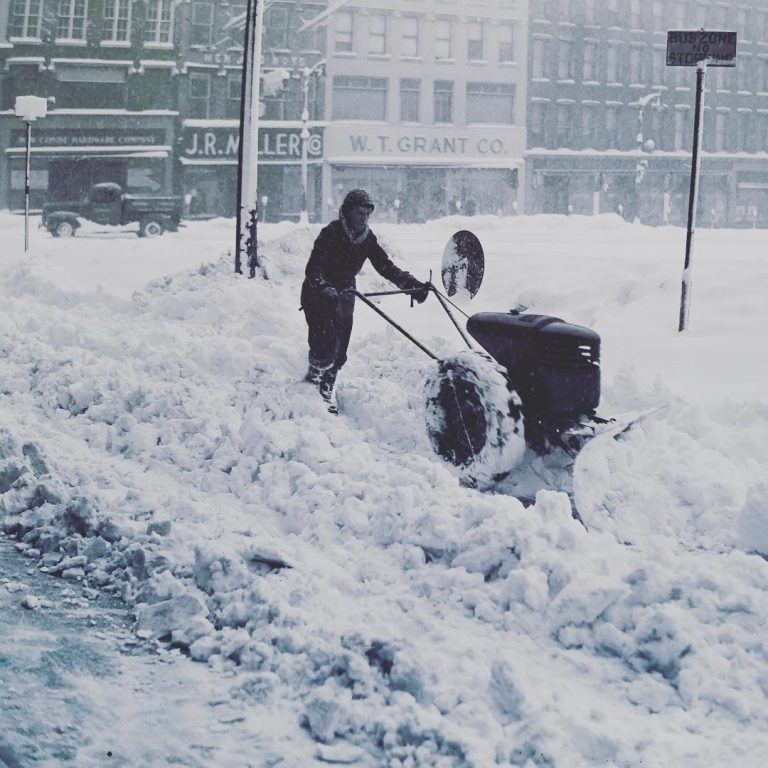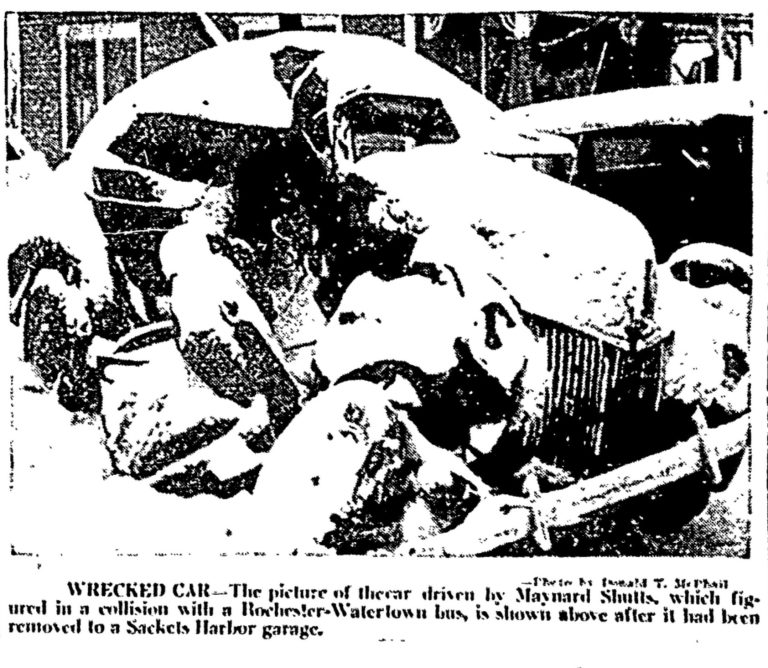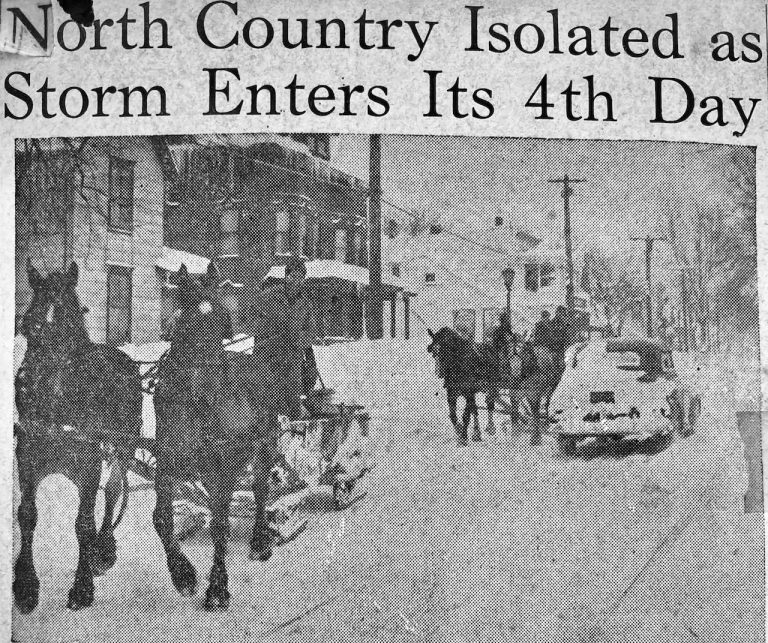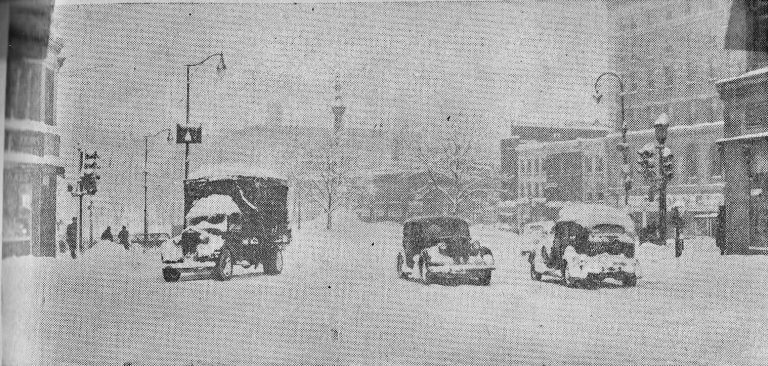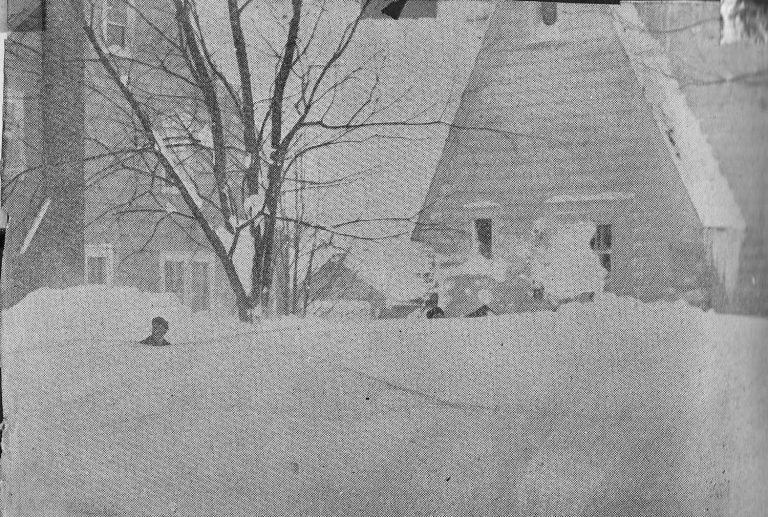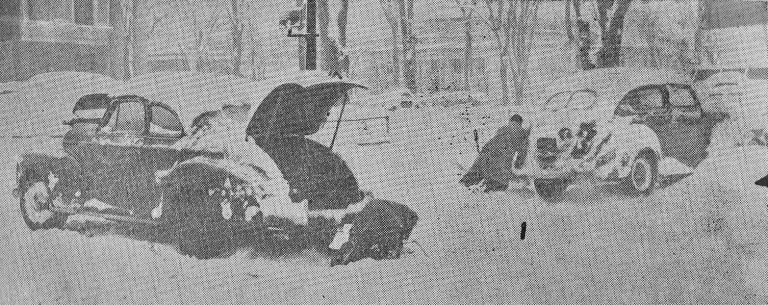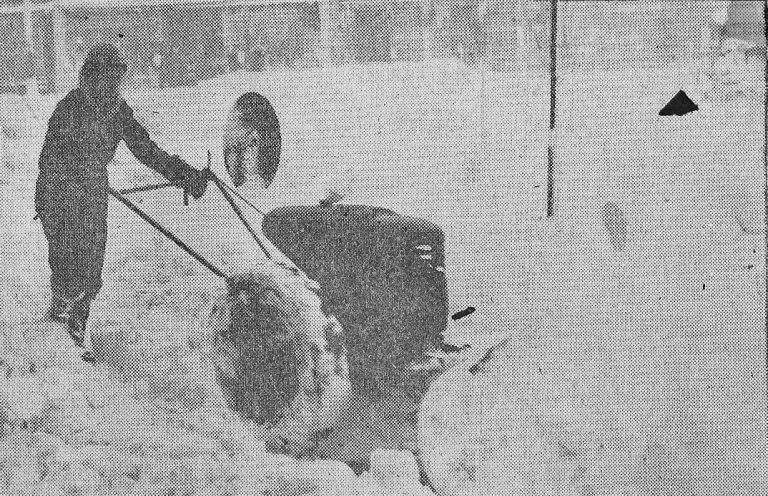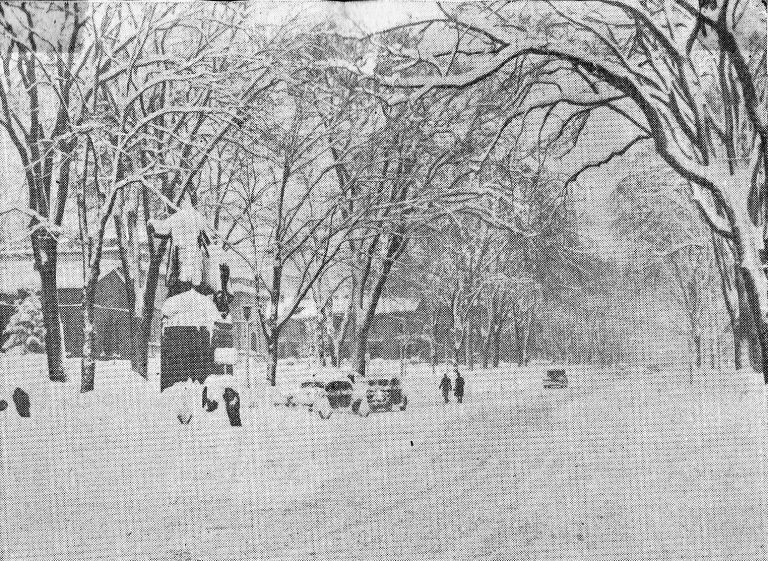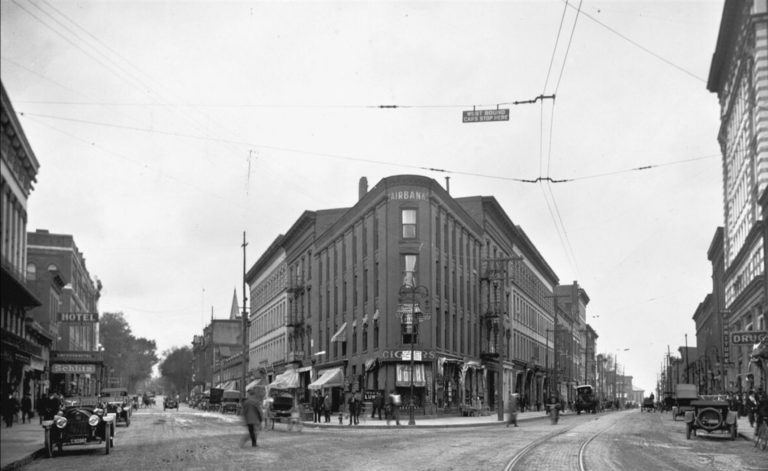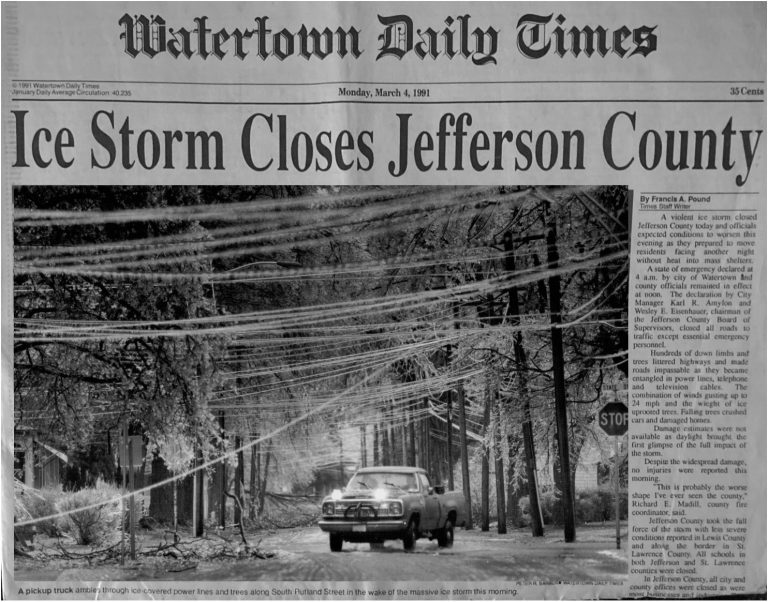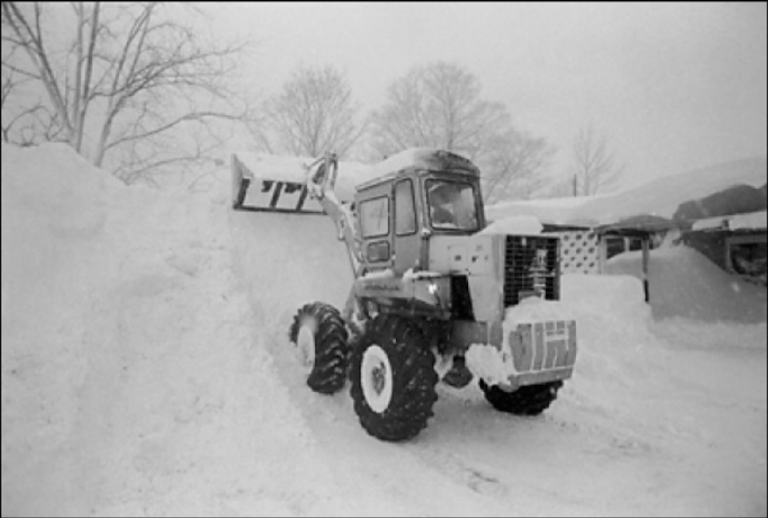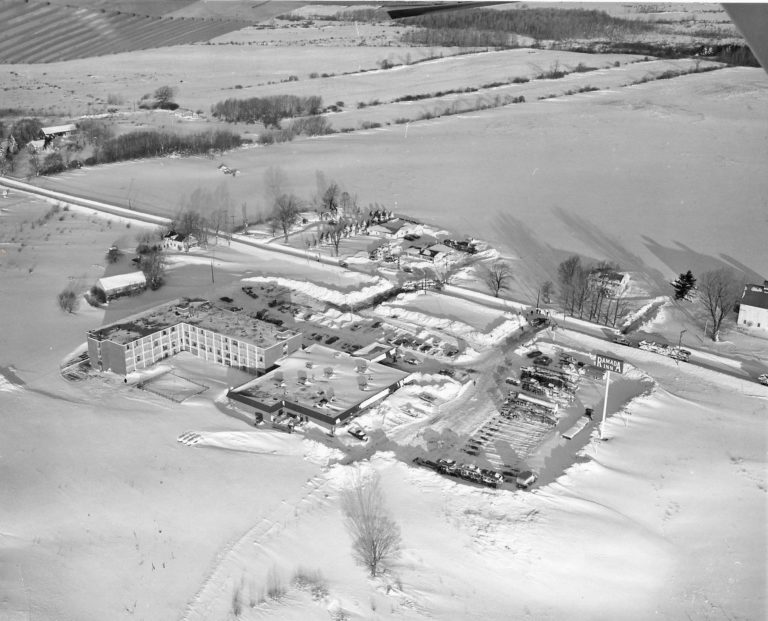The March 1947 Snowstorm: North Country Paralyzed By Three Consecutive Weekend Snow Storms
The March 1947 snowstorm that occurred over four days at the beginning of the month dumped over 40 inches of new snow in the region and was deemed “the worst and most crippling ever to hit the north country.” The region was still recovering from snowstorms over the prior two weekends, but this storm’s accumulations brought many food shortages and isolation.
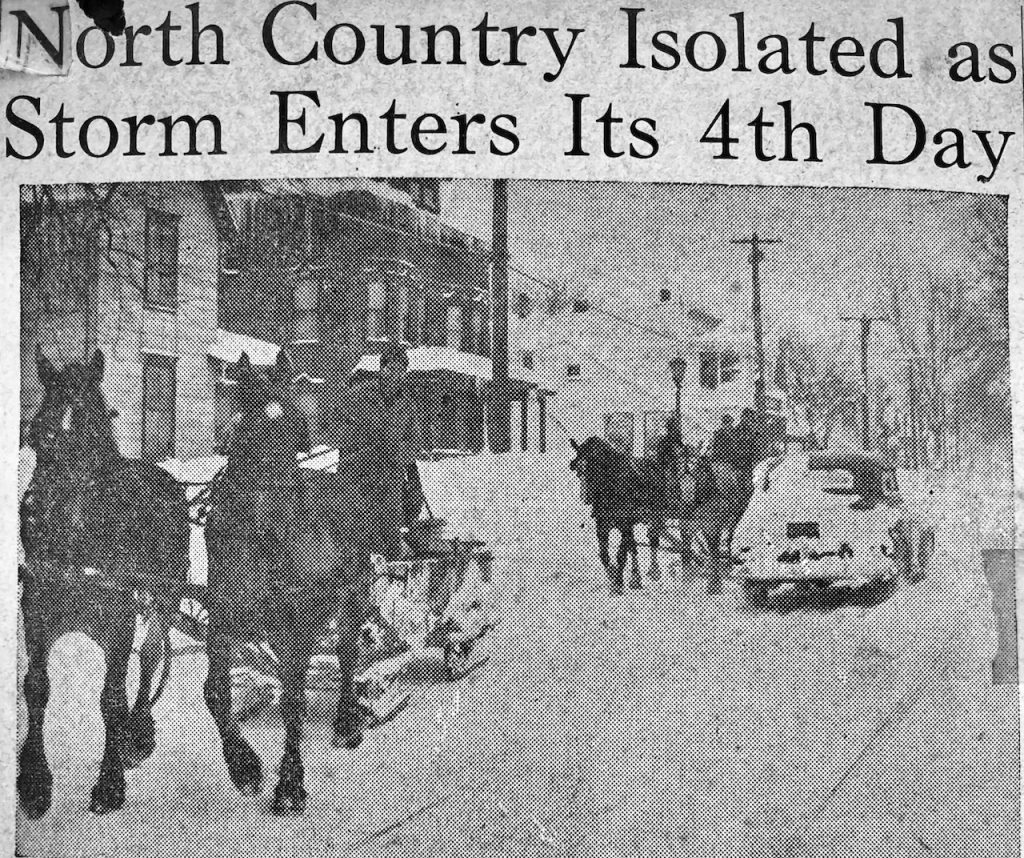
The season’s total for 1946-47 was a relatively benign 57.5 inches, but by March 4, it had skyrocketed to over 125 inches, with 68 inches since mid-February. By the storm’s third day, many trains were blocked, and one to three feet of heavy, wet new snow was reported isolating scores of communities.
The Watertown Daily Times reported that day–
King winter, which has had northern New York hanging on the ropes for four days from devastating snow storms, dealt a knockout blow with a new attack in the past 24 hours spreading wet snow over the entire area.
Transportation facilities, already reeling from two serious storms last week, were practically paralyzed today in the wake of the fresh storm.
Railroad trains operated on limited and delayed schedules. Late this afternoon, the Central Greyhound Bus Lines announced that all runs have been canceled. Only buses operating out of the city were to Massena, the Fitzgerald Line, and to Sackets Harbor, the Freeman Line.
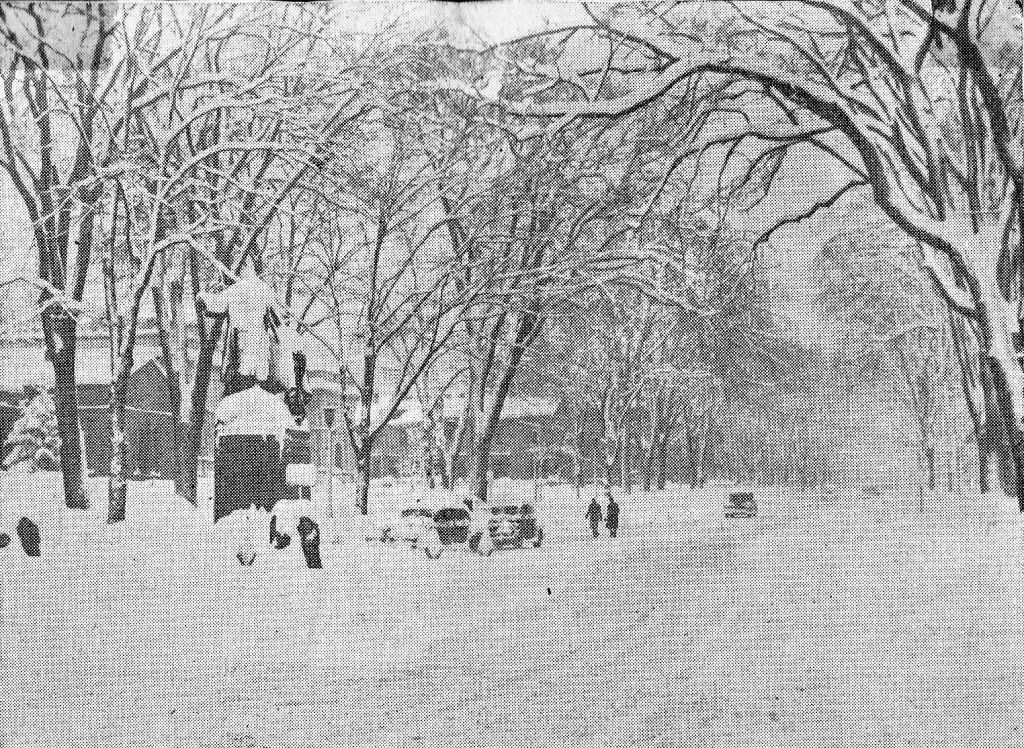
By mid-afternoon on the 3rd, 25-mile-an-hour winds further compounded the situation, whipping loose snow into drifts. Snow squalls were forecasted for later that night. State police reported that the main Watertown to Syracuse road was opened due to “around-the-clock” snow removal operations. However, the road between Cicero and Brewerton remained slippery and worsened.
The Trainmaster for the St. Lawrence Division, New York Central railroad, reported conditions as “the worst ever” and that the division had suspended all freight trains until rail travel returned to “near normal.”
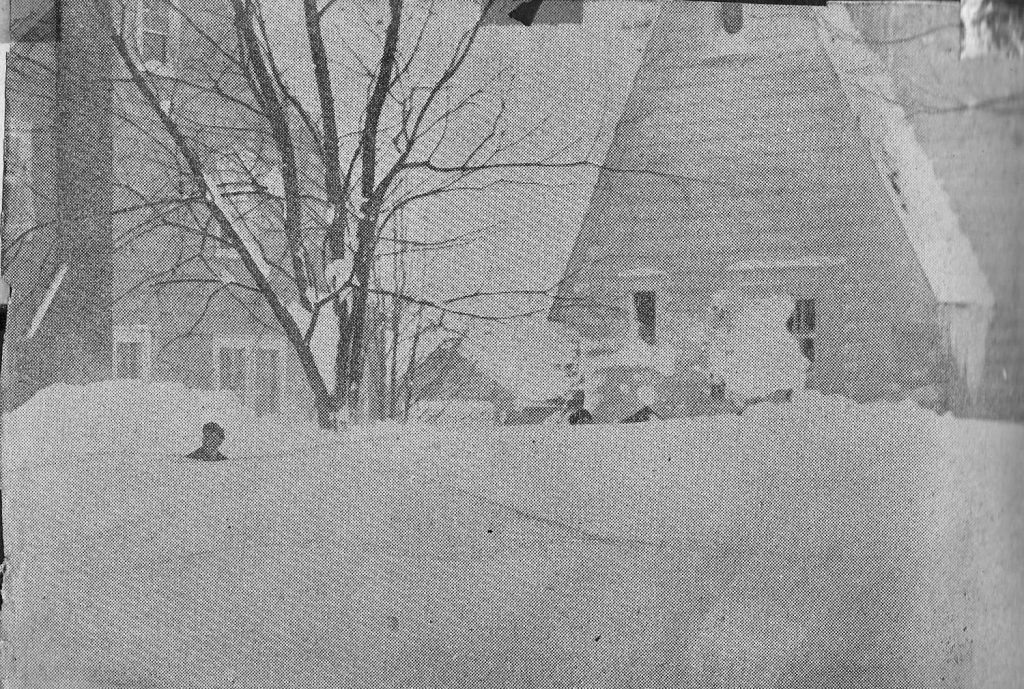
In Watertown, the public works department had its hands full with 23 new inches by the afternoon of day three. Every piece of snow removal equipment was in a futile effort to keep the streets open to the tune of 1,000+ gallons of gasoline used as banks along sidewalks began to reach heights of 9 and 10 feet in areas.
The police didn’t have it any easier, deluged with calls from stranded motorists and inquiries about road conditions all day. The telephone exchange was reported as “seriously overloaded,” with over 107,000 calls on Monday, the second day of the storm, with even more expected on the third.
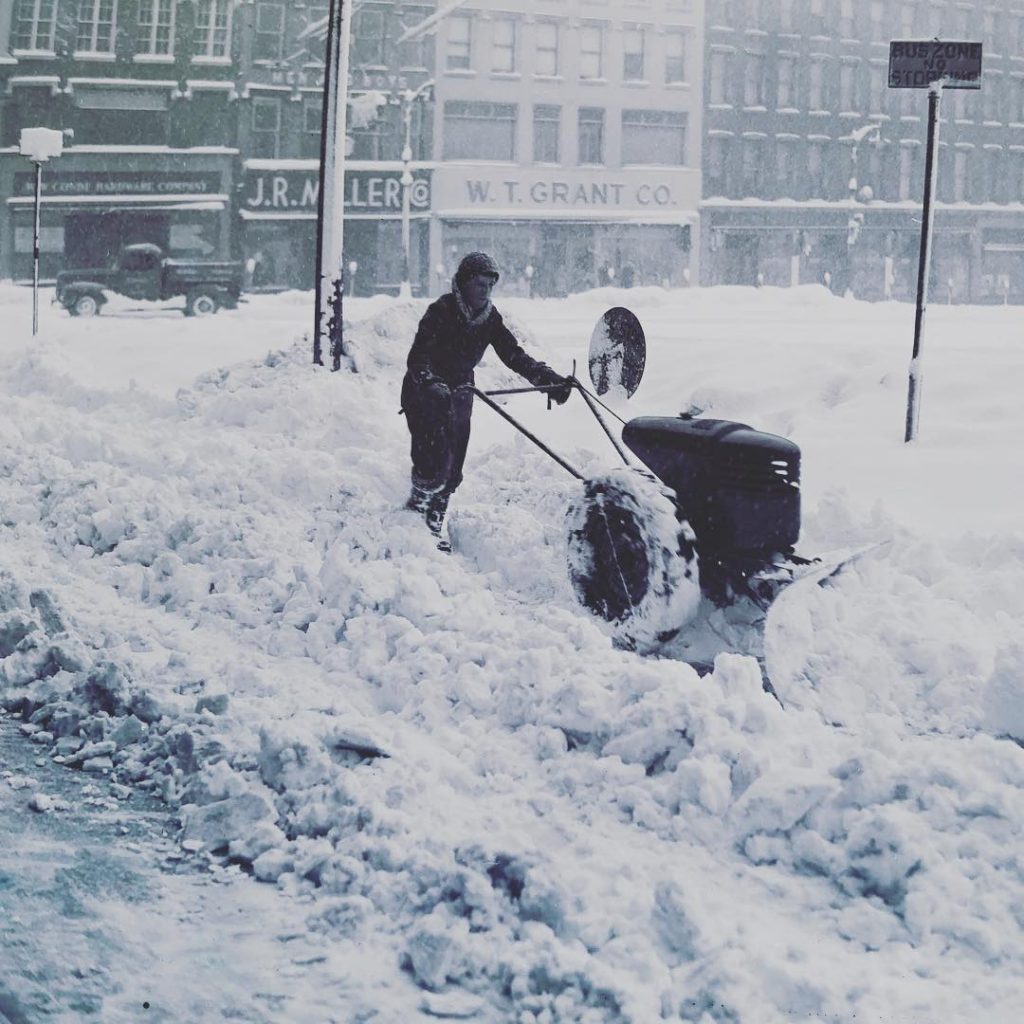
That Monday night, the municipal airport loaned its rotary plow to the city after failing to keep the runways open as wind gusts reached 50 miles per hour, isolating it from the rest of the county.
On the fourth day, March 4th, the Watertown Daily Times reported–
The entire north country was in a virtual state of isolation today in the wake of a history-making relentless snowstorm which halted all transportation operations, closed schools, contributed to scores of accidents and has created serious food shortages.
The storm was in its fourth day and already up to 40 inches of new snow is on the ground in some areas. The federal weather bureau issues an optimistic ray of hope with a forecast that the next 24 hours would bring relief.
All highways are blocked with the exception of the Dexter and Sackets Harbor roads. The Greyhound Lines canceled all runs indefinitely. No bus has gone to Syracuse or New York since Sunday while the only bus which operated Monday was an incoming omnibus from Ogdensburg.
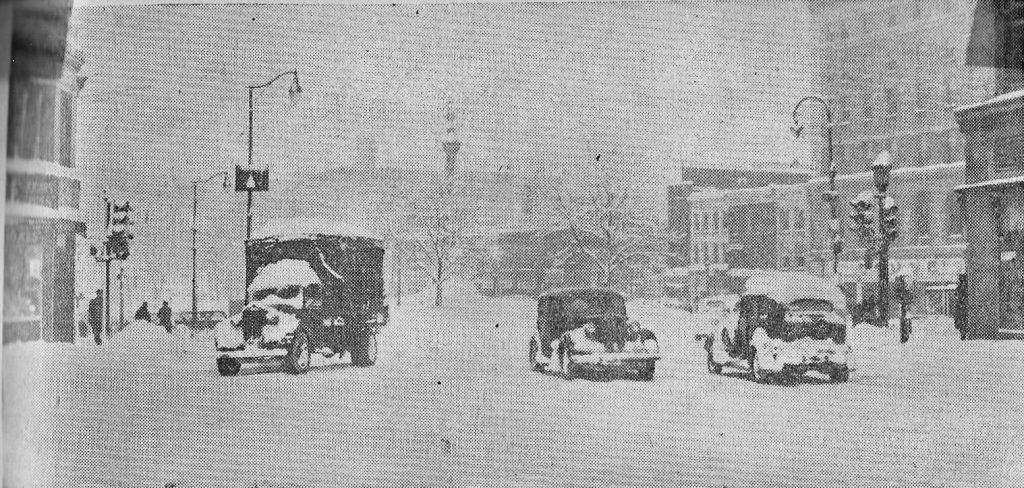
Winds had increased to a steady 35 miles per hour over the past 24 hours, making it impossible for plows to keep up with the work. Every time a road was plowed and opened, another filled, making travel impossible.
As of the fifth day, Wednesday, March 5th, twenty secondary streets in the city, including dead-ends, had yet to be plowed. Despite the threat of food shortages and travel issues, residents were encouraged by the wind, which had calmed down, and the news that every street would be at least open by early Thursday.
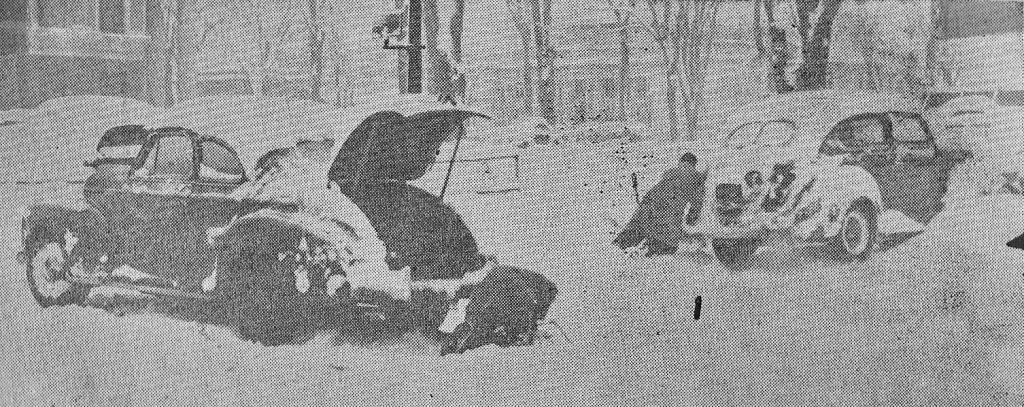
The March 1947 snowstorm was nearing its end, but the city’s funding for snow removal was exhausted after the previous month’s need for additional funding. The city manager said he planned to ask the city council to appropriate an additional $10,000 from unappropriated funds to meet the emergency and, hopefully, the rest of the snowfall for the season.
